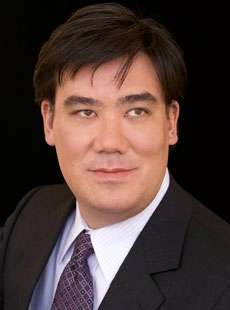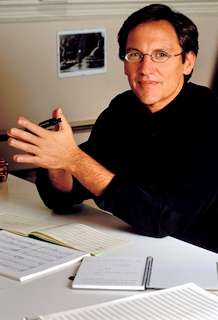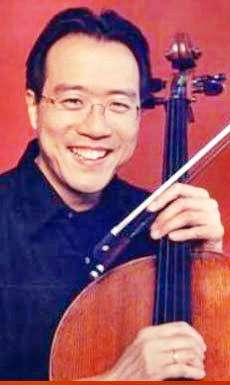|
Back
Rhapsodies in Iberia New York
Avery Fisher Hall, LIncoln Center
09/25/2013 -
Maurice Ravel: Alborada del gracioso – Boléro
Osvaldo Golijov: Azul
Astor Piazzolla: La Serie del Angel: Suite (arr. Octavio Brunetti)
Yo-Yo Ma (Cello), Michael Ward-Bergeman (Hyper-accordion), Jamey Haddad, Cyro Baptista (Percussion), Glenn Dicterow (Violin), Erio Huebner (Piano)
New York Philharmonic, Alan Gilbert (Conductor/Musical Director)

A. Gilbert (© NY Philharmonic)
Like the intertwining rosettes for the background drapes on the stage of Avery Fisher Hall last night, this “Opening Night Gala” had a potpourri of themes, each clinging to the other. We had the theme of “blue”, not only the varying blue colors of the drapes, but the theme of Osvaldo Golijov’s incredible blue Azul. There was the theme of Spanish music, though every composer had only a peripheral connection with Spain. (A Basque-born Frenchman, an Italian-American Argentinian, an Argentinian with musical roots in the Middle East.) It was the theme of Yo-Yo Ma in two works of composers he had always championed. And it was the music of dance, even when the dances were hidden, barely showing under the singular percussion.
And on a personal note, while I avoid any Opening Gala of anything, Alan Gilbert’s programming was so unusual, so seductive, that I could never pass this one up.

O. Golijov (© Sarah Evans)
Yet of all four works, one, Azul was so astounding, that others could have gone from the blue to the dark shadows.
The fecund gifts of Mr. Golijov can be lost in his intricate interests. The Arab, Sephardic Jewish, South American, Bach, George Crumb-inspired pieces may crowd themselves out with brilliance. But here, in a work written for Mr. Ma, Golijov’s omnivorous appetites coalesced. Nothing in the exotic orchestration–the West African drum, the shaking basket of seeds, the Peruvian box-drum, the drums from Cuba and India, the hyper-accordion–stood out, but were a part of the fabric. The introductory poem by Pablo Neruda (one of the composer’s favorites) was not political but surrealistically beautiful.
And the mood was absolutely stirring. Mr. Ma’s cello could be lyrical, faintly Sephardic, with melodies that issued from unknown regions. His long cadenza was not solo, but accompanied by percussionists Jamey Haddad and Cyro Baptista, like shivery wind formations in the Negev desert. The Silenzio movement could have come from an 18th Century concerto slow movement, and the finish was a very controlled swirl, what the composer called “a shooting star.”
All of Gojilov’s music has its own attractions (or the detractions of his eclectic sources), but in Azul, they came together with the art of the most accomplished and inspired painter.

Y.-Y. Ma (© NY Philharmonic)
Mr. Ma continued his work with a suite of three works by Astor Piazzolla, arranged by the Argentinian composer Octavio Brunetti. Like Mozart and George Gershwin, Piazzolla took the prevailing forms of his times and country and transcended them with his own genius. Like Gershwin, Piazzolla wanted to “go classical”, yet the results were not always successful. (Compare the maudlin theme of Rhapsody in Blue with haunting The Man I Love.) Yo-Yo Ma has championed Piazzolla in all forms, but the three piece last night had limited meanings after Azul.
It was hardly the cellist’s fault, nor the hyper-accordion of Michael Ward-Beregman (a substitute for the bandoneon). But the pulsing tango rhythm had been put to more inspired use by Piazzolla in his purest form.
Little can be said about Alan Gilbert’s opening and closing Ravel. The Alborada del gracioso was Ravel’s Spanish song with the most subtle of colors, with the shadows of rhythms, and gorgeous bassoon playing. Boléro was...well, Boléro. The orchestra was fine, the first chairs did their part, Mr. Gilbert was in command.
Those drapes and the side lights changed colors with each repeat–from violet to lavender to azure to peacock. During the final crescendo, though, the lights changed to blazing red, not only deflecting from the theme of the concert, but gilding the already fiery ending from Gilbert and Ravel.
Harry Rolnick
|